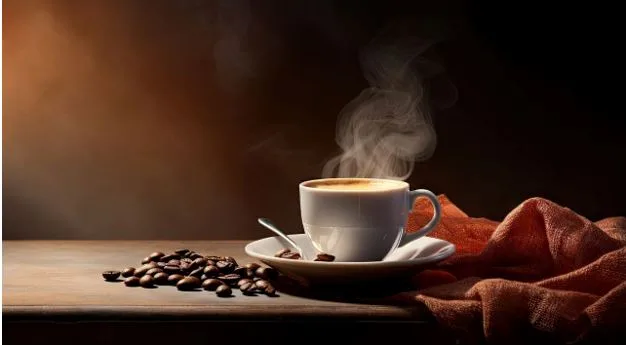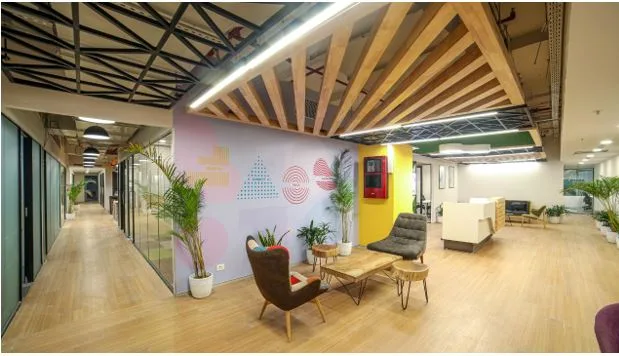Why Tonino Lamborghini Coffee Defines Luxury Espresso
In a market where “premium” and “gourmet” have become routine adjectives, it’s fair to ask what truly counts as luxury in coffee. For trained baristas and discerning home espresso drinkers, the answer isn’t packaging copy; it’s measurable quality: bean selection and ratios, roast precision, extraction performance, crema, sensory balance, packaging that preserves volatile aromatics, clean safety data, and repeatability in the cup. This article explains how Tonino Lamborghini coffee meets those criteria using verifiable, technical details from the official blend sheets—so you can judge on evidence, not adjectives.
Luxury Has a Definition in Coffee—And It’s Measurable
When espresso professionals evaluate a coffee, they look for repeatable excellence, not a one‑off good shot. That begins with three pillars:
- Raw material quality and blend architecture (Arabica/Robusta ratios chosen for function, not just marketing).
- Roast profiles are tuned to the intended extraction parameters (time, dose, temperature, and beverage mass).
- Preservation and safety (barrier materials, protective atmosphere, shelf life, and clean micro/contaminant data). Tonino Lamborghini publishes those fundamentals for its blends and capsules. That transparency is the first indicator you’re looking at a serious coffee program, not a label exercise.
Blend Architecture: Arabica/Robusta Ratios Chosen for Performance
Espresso wasn’t invented for 100% Arabica. In Italy, most benchmark espressos are blends—often Arabica‑led with a controlled addition of Robusta to deliver crema stability and a firmer tactile finish. Our line reflects that logic across formats:
- Whole beans: Black, Red, Platinum, each with its own roast target (Medium/Full City) and dial‑in specs. Black is tuned for classic Italian balance; Red leans into higher body; Platinum prioritizes aromatic complexity in a 100% Arabica profile.
- Coffee Capsules: precise, published ratios with aluminum barriers and protective atmosphere. For example: PLATINUM capsules at 100% Arabica, RED capsules at 80% Arabica / 20% Robusta, and BLACK capsules at 60% Arabica / 40% Robusta, each with clearly stated sensory cues and a 24‑month shelf life from packing under a protective atmosphere. Decaf (DEK) is Arabica‑led as well.
For an expert, the point isn’t that one ratio is “better.” It’s that the ratio is intentional for the target cup. If you want very high crema persistence for cappuccino service, you reach for a blend like Red. If you wish for a silkier, more aromatic straight shot, Platinum’s composition makes sense. Publishing those ratios up front invites serious users to match blend to purpose.
Roast Targets and Extraction Windows, Published and Practical
Luxury coffee earns that label when the company doesn’t leave you guessing. Your sheets give precise espresso parameters per blend:
- Black (whole bean): Espresso extraction temperature 89–92 °C; minimum double dose 14 g; target extraction 21–26 s; beverage mass ~2 × 16–20 g (≈2 × 20–25 ml). Organoleptics indicate toasted grain, spice, and cocoa, with a medium to high body and measured bitterness.
- Red (whole bean): Espresso temperature 90–93 °C; double dose 14.5 g; 22–28 s; similar beverage mass target; sensory leans chocolate/dried fruit, high body, medium bitterness—ideal where milk integration matters.
- Platinum (whole bean): Espresso temperature 91–93 °C; double dose 15 g; 22–28 s; sensory emphasizes dark chocolate/toasted bread on the nose, with a fruit‑tinged acidity and lower perceived bitterness, consistent with a refined 100% Arabica profile.
Those windows aren’t generic advice; they’re the specific ranges the roaster engineered the blends around. Users who dial in inside those bands will see the hallmarks of a correct shot: steady cone formation, hazelnut‑to‑tiger crema, balanced viscosity, and flavor progression from first sip to finish. If you brew across methods, the same logic applies. Roast development and particle size must match the flow and contact time. For shoppers choosing by brew style, these are not abstractions—they’re practical guides backed by the roast and blend architecture.
Water and the Cup: Targets That Protect Flavor
Water chemistry makes or breaks extraction. Our Black sheet specifies an ideal water hardness range centred around typical Italian espresso targets (practical band ~70–170 ppm as CaCO₃), with carbonate and TDS indicators. That aligns with what many technicians consider the optimal balance of clarity and mouthfeel in espresso. Outside those ranges, you’ll see telltale flaws—hollow shots in very soft water; muted aromatics and astringency in tough water. By providing users with a numeric target, you enable consistent results across both home and café environments. For readers who want deeper context on tasting and sensory mapping, the Specialty Coffee Association’s flavor wheel is the industry’s common language for aroma and taste families (external reference: Specialty Coffee Association flavor wheel). It’s the framework many Q Graders and trainers use to describe precisely what we publish on our sheets: bread/toast, cocoa, nutty, fruit, spice, and balance markers like acidity, body, sweetness, and bitterness.
Packaging That Preserves Volatiles—And It’s Specified
Freshness isn’t a slogan; it’s a materials and atmosphere problem. Our capsule sheets state aluminum bodies with paper ring, plus protective atmosphere packing and a shelf life of 24 months. Aluminum is an excellent barrier to oxygen and light compared with many polymer blends, which slows oxidation of aromatic compounds (especially the delicate ones you roast for in Platinum and Red). For beans, the guidance is equally straightforward: store at room temperature, cool/dry, and note the dramatic shelf‑life shift once a bag is opened (36 hours recommended window for opened whole beans, 2 hours once ground). Those recommendations reflect a simple truth experts know well: grind and exposure accelerate staling. Publishing it tells customers we’d rather they taste the coffee at its best than move volume. If you want a general industry primer on capsule barrier behavior and the reasons for protective atmosphere, Nespresso’s professional knowledge base is a useful overview of why high‑barrier single‑serve formats preserve crema‑relevant gases and aromatics better than low‑barrier formats.
Safety and Cleanliness—Specs, Not Claims
Our capsule specifications include allergen-free and GMO-free declarations, as well as clean micro targets (CBT <1,000 cfu/g; yeasts/moulds <100 cfu/g; contaminants, such as Ochratoxin A, set to stringent maximum limits). Publishing contaminant thresholds matters; for professionals, it signals the coffee is built not just to taste standards but to safety standards. For readers seeking a neutral reference on coffee contaminants and quality programs, the International Coffee Organization offers accessible guidance on quality and safety in both green and roasted coffee. Again, luxury isn’t the absence of problems; it’s proof that the issues are managed.
Sensory Profiles the Way Pros Read Them
Because our sheets quantify sensory axes, an experienced drinker can pick the correct SKU by reading numbers, not adjectives:
- Black (whole bean):Aroma ~7 with bread/cereals; flavor ~7 with spice/walnut/cocoa; acidity ~5.5 (just noticeable); body ~8.5; sweetness ~6; bitterness ~3.5. In the cup, that’s a confident, classic profile: aromatic warmth, solid crema, rounded cocoa‑spice center, and controlled bitterness that preserves sweetness.
- Red (whole bean): Slightly higher perceived body and chocolate/spice; acidity calibrated lower than Platinum; bitterness moderate, excellent in milk, not just neat.
- Platinum (whole bean): Higher apparent sweetness, lower bitterness, fruit‑tilted acidity, and a long finish—what you expect from a well‑roasted 100% Arabica espresso designed for clarity without losing texture.
Capsules inherit this same design logic, with the added variable of tighter puck geometry and pressure consistency. Because the capsule line discloses ratios—BLACK 60/40, RED 80/20, PLATINUM 100—you can anticipate crema behavior and tactile build before you brew.
Where Tonino Lamborghini Differentiates from Typical Premium Coffee
- Documented dial‑in windows by blend. Many brands provide generic recipes; we publish the temperature, dose, time, and beverage mass for each SKU. That saves users time and improves consistency.
- Blend ratios disclosed. The majority of retail coffees do not disclose exact Arabica/Robusta ratios. You declare them (especially in capsules), which lets baristas choose functionally, not just by name.
- Packaging specifics. Aluminum capsule construction, a protective atmosphere, and shelf life are stated plainly. That’s not common on consumer packaging.
- Safety and micro specs.Allergen-free/GMO-free, plus explicit OTA and micro targets, demonstrate a controlled process, not just a tasty product.
- Cup‑focused sensory maps. The organoleptic scales (aroma, acidity, body, sweetness, and bitterness) guide expectations and help experienced users categorize each blend according to its use case (straight shot vs. milk drink, robust vs. refined profile).
How to Choose the Right Lamborghini Coffee—By Use Case
Straight espresso purists who want clarity, aromatic lift, and lower bitterness will gravitate to Platinum. If you prefer a bar‑style cappuccino with crema that persists under milk, Red’s higher body and Robusta component make technical sense. Black sits in the classic middle: structured, cocoa‑spice forward, balanced for daily espresso that still reads “Italian.” If your workflow is capsule‑based, the exact mapping applies: PLATINUM (100) for aromatic finesse, RED (80/20) for stout body, BLACK (60/40) for an assertive, traditional profile. Decaf drinkers aren’t left behind; the DEK capsule is Arabica‑led with the bitterness moderated—designed to taste like “coffee” first, not “decaf.”
Why This Meets the “Luxury” Test, Even for Skeptics
Luxury in espresso isn’t about loud roast profiles or trendy origins. It’s about a system tuned for repeatability and texture at espresso’s extreme extraction parameters. Our program clears that bar with:
- Disclosed engineering (dose/time/temp/water).
- Disclosed architecture (blend ratios per SKU families).
- Disclosed preservation science (aluminum capsules, protective atmosphere, shelf life).
- Disclosed sensory targets (bitterness/sweetness/body calibrated, not left to chance).
Professionals trust systems they can audit. Publishing the system is the most “luxury” thing a coffee brand can do.
Practical Tips for Customers to Get the Intended Cup
Even the best coffee will underperform if the variables drift. These simple checks align with our specs and will help customers extract what the roaster built in:
- Dose to spec: 14–15 g for a double, depending on the blend. If a shot runs fast at the correct grind, bump the dose slightly within the sheet’s window before chasing grind extremes.
- Time to spec: 21–26 s (Black) or 22–28 s (Red/Platinum). If the flow stalls, coarsen ⅛–¼ turn; if it gushes, tighten ⅛–¼ turn.
- Beverage mass: Aim for ~40–50 g for a classic double ristretto-to-normale, depending on the target cup balance, matching the sheet’s ~20–25 ml per single reference.
- Temperature: Match the sheet’s range. If your machine allows PID control, log stability—drift outside a ±1 °C band can mute sweetness.
- Water: Keep hardness near the sheet’s band (≈70–170 ppm as CaCO₃). Treat or blend the water if needed; the taste clarity will improve. For capsule users, keep machines descaled and purge the head briefly before extraction to stabilize the temperature—also, pre-warm cups to protect the crema’s integrity.
Internal Resource Map (for shoppers who want to dive deeper)
- Explore the Whole Bean Coffee Collection to choose between Black, Red, and Platinum by cup profile.
- Prefer convenience? The Coffee Capsules Collection lists Platinum, Red, Black, and DEK, along with their declared ratios and tasting notes.
- If you brew without a grinder, compare formats in the Espresso Ground Coffee Collection.
What This Means for “Luxury” and Price
When customers ask why a luxury espresso costs more, the honest answer is that you’re paying for: higher‑grade inputs, tighter roast control, post‑roast handling that protects aromatics, safety testing, and the discipline to publish how to reproduce the intended cup. For professionals, that’s the difference between one bag that happened to taste great and a program that produces the same cup across batches. Luxury, in this sense, isn’t decorative—it’s controlled.
A Note on Decaf (Because Experts Care)
Decaf is often where premium brands cut corners; dark roasts mask bitterness, and the sensory profile suffers as a result. Our Decaf capsule specification maintains the Arabica-led architecture and adheres to the same organoleptic targets and shelf-life safeguards as the caffeinated line. For people who monitor caffeine intake but refuse to compromise on mouthfeel and crema, that’s a material difference—and again, it’s documented.
Evidence over Adjectives
Experienced espresso drinkers are hard to impress, and that’s good. It means the conversation can stay grounded in dose, time, temperature, water, cream behaviour, and sensory balance. Tonino Lamborghini’s program puts those numbers on the table, and the engineers blend for specific cups. If you’ve been skeptical of the word “luxury” in coffee, that’s healthy. Judge us by the sheets, brew by the numbers, and taste the difference a declared system makes.





